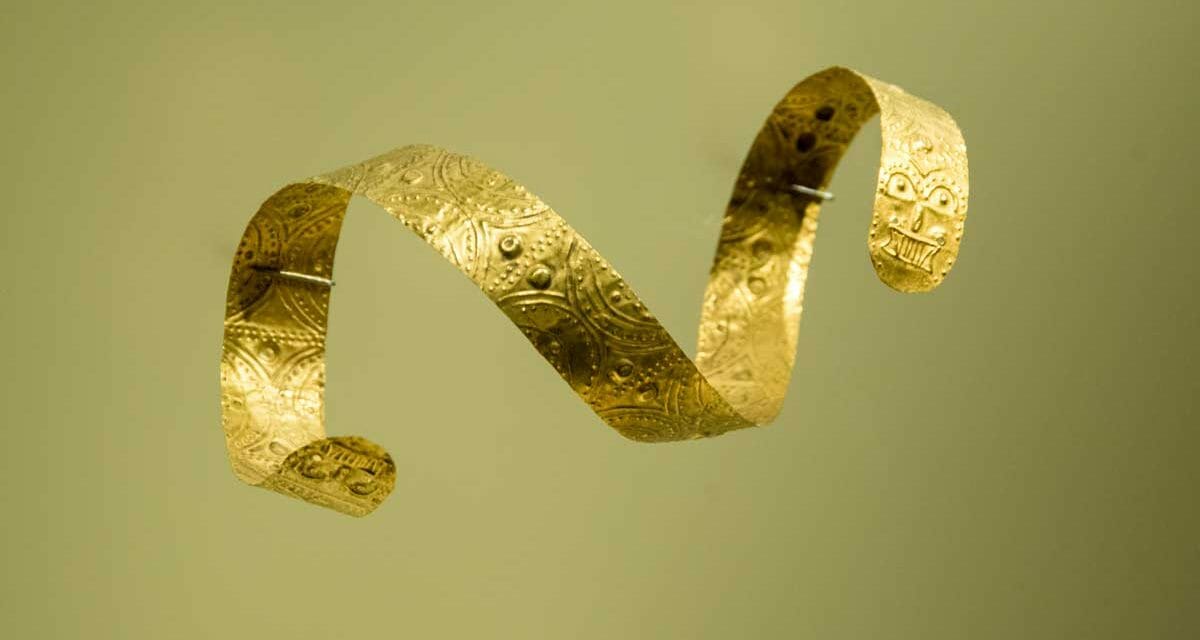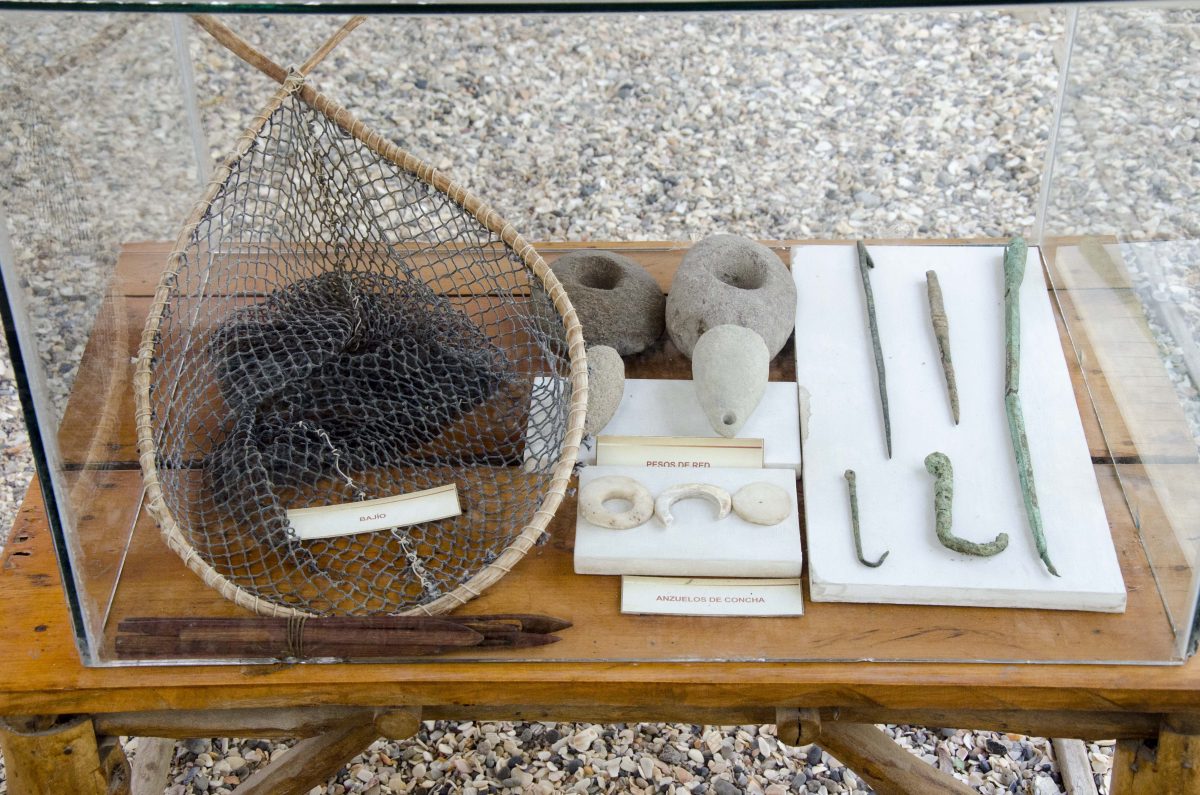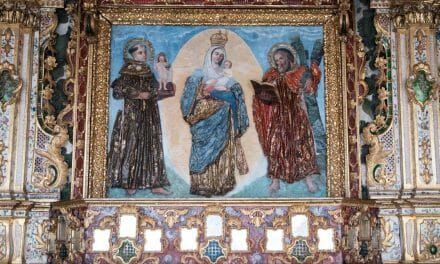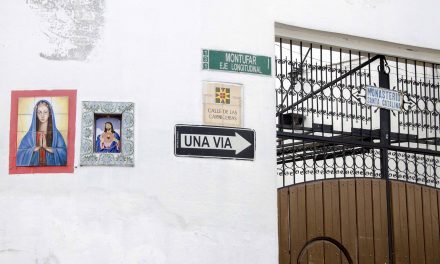As responsible travelers evolve, so do the stories we share.
This article is part of our living archive — trusted content we continue to care for.
First published on October 13, 2018 • Last updated on October 13, 2018.
I’ve walked into a lot of museums in South America, from Argentina to Peru, Ecuador to Bolivia, and none have bowled me over like the Museo del Oro in Bogotá, Colombia. It’s one thing to hear from friends that it is a must visit. It’s another to wish that you had more time to return. A single visit is overwhelming.
The Bogota Gold Museum
The Museo del Oro presents its collection in four separate installations: metalworking, regions, cosmology, and a final exhibit called The Offering. I am not going to give you a step-by-step tour. It would drive you crazy. But I am going to share just a few of the highlights that we really enjoyed.
El Trabajo de Los Metales (Metalworking)
It is amazing that ancient peoples used so many different techniques to work gold, from how they heated the metal to how they formed it. Some used wax molds to shape gold, others hammered it into thin sheets, others extracted wire and manipulated it into shapes.
This exhibit not only shares pieces made in each technique, it explains and points out details in many pieces. For example, when examined under a microscope, some of the artifacts show finger prints embedded into the gold surface. Recent analysis shows that these pieces were formed in wax molds. Those molds retained the fingerprints of the artists and transferred them to the final works of art.
Gold Regions Of Colombia
The next section of the museum presented gold artifacts by the different areas where they were discovered in Colombia. Intermixed with the occasional pottery pieces, this part of the museum reveals the diversity of ancient cultures in pre-colonial Colombia. Since most North Americans are only familiar with New World ancient civilizations like the Inca in Peru and the Aztecs and the Mayans of Mexico, almost every culture will come as a surprise. Understanding the complexity of these ancient societies, how they overlapped in both time and place, is worthy of more study.
Objects found in this section of the museum reflect regions as well – toucans and crocodiles from the Amazon Basin, long-beaked frigate birds and flying fish from the coast, pumas and bears from the Andes.
Cosmology Found In Gold Artifacts
Cosmology is the study of the origin, evolution, and end of the universe. The word seems to translate slightly differently in English, with strong connections to astronomy. In this museum, it refers to the worldview of these ancient peoples, including what we might call their religious beliefs.
Symbols like the sun, the puma, the snake, the Andean cross, and the infinite spiral appear in multiple pieces, crossing centuries and societies. Many never had contact with the Inca, the society with which we most often associate these symbols. Furthermore, interesting figures combine animal and human shapes like bird-women and bear-men. These creatures are often associated with shamans, men and women who took part in rituals using everything from lightly addictive tobacco to more powerful coca to the hallucinogenic yagé or ayahuasca.
The Offering RAFT (La Ofrenda)
The final exhibit held two highlights. The very last room came as a big surprise and I will tell you about it first. We were directed into a dark room. The doors closed behind us and the lights slowly began to appear while Andean pipe music played in the background. As the lights shifted and changed, they highlighted different parts of the room. At first, it was hard to tell what we were seeing but as the lights became brighter in sections, it was apparent that the entire space was another exhibit of gold pieces. We had literally walked into a theatre of gold. It was amazing and stunningly beautiful. It made for a satisfying finale.
However, my favorite exhibit of the entire museum was the second to last room we entered. A single object shone bright gold from amidst a sea of darkness, an intricately-crafted raft holding several important individuals. The observations of the Bogota-born criollo, Juan Rodriguez Freyle. In 1636, he wrote:
By the lake of Guatavita they made a great raft of reeds, decorating it as beautifully as they could… They undressed the heir, anointed him with a sticky earth and dusted him with ground and powdered gold, so that he went in the raft completely covered with this metal. The golden Indian made his offering, casting all the gold and emeralds he had bought into the middle of the lake, and the four chieftains who were with him made their own offerings and when the raft landed the feast commenced, flutes and conch shell trumpets, with great dances in circles according to their custom, with which ceremony they received the new ruler and acclaimed him their lord and prince.
From this ceremony came the celebrated name of El Dorado.
The detailed work in this small but intricate piece is striking. Each and every figure has characteristics that make it stand out from the others. Incredibly hard to photograph without a tripod, I have done my best to provide a couple of images that do it justice. The first is an overall view of the entire piece, only about 6 inches long, 4 inches wide, and perhaps another 5 inches tall.
In this next photo, I have attempted to focus on a few of the images on the floating raft. Take note of the detailed faces and finely crafted limbs.
In truth, photos cannot do this piece justice. It is a stunning display history, culture, and wealth, all in one go.
In conclusion, all I can say is that this museum is worth your time, even if it’s only to visit a few of the exhibits. You won’t be disappointed.
Information For Your Trip
Most exhibits provide English translations. Guided tours are available.
Location: The Gold Museum of Bogotá is located on Parque Santander near the Iglesia de San Francisco. For directions by bus, check out moovitapp.
Entry Fee: The entrance fee is minimal, COP 4000, a little more than $1.
Hours of Operation: Open Tuesday through Saturday from 9:00 am until 6:00 pm; Sundays and holidays from 10:00 am until 4:00 pm; closed Mondays.
Confirm latest information from the official website: http://www.banrepcultural.org/bogota/museo-del-oro














































